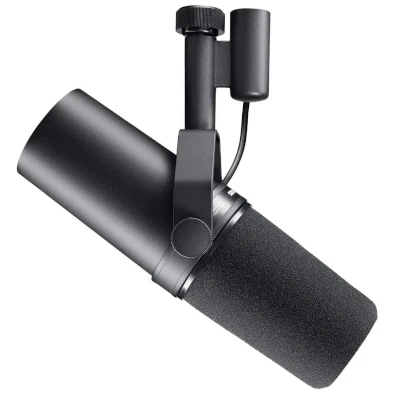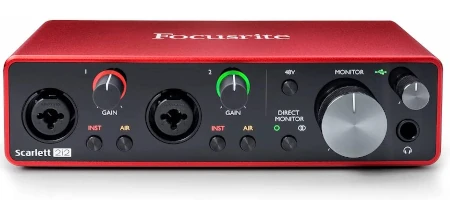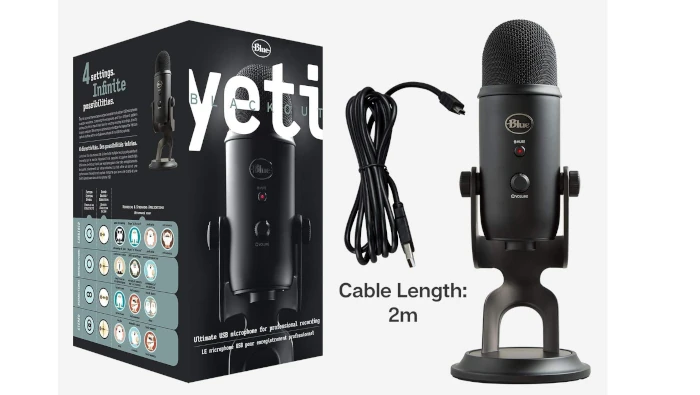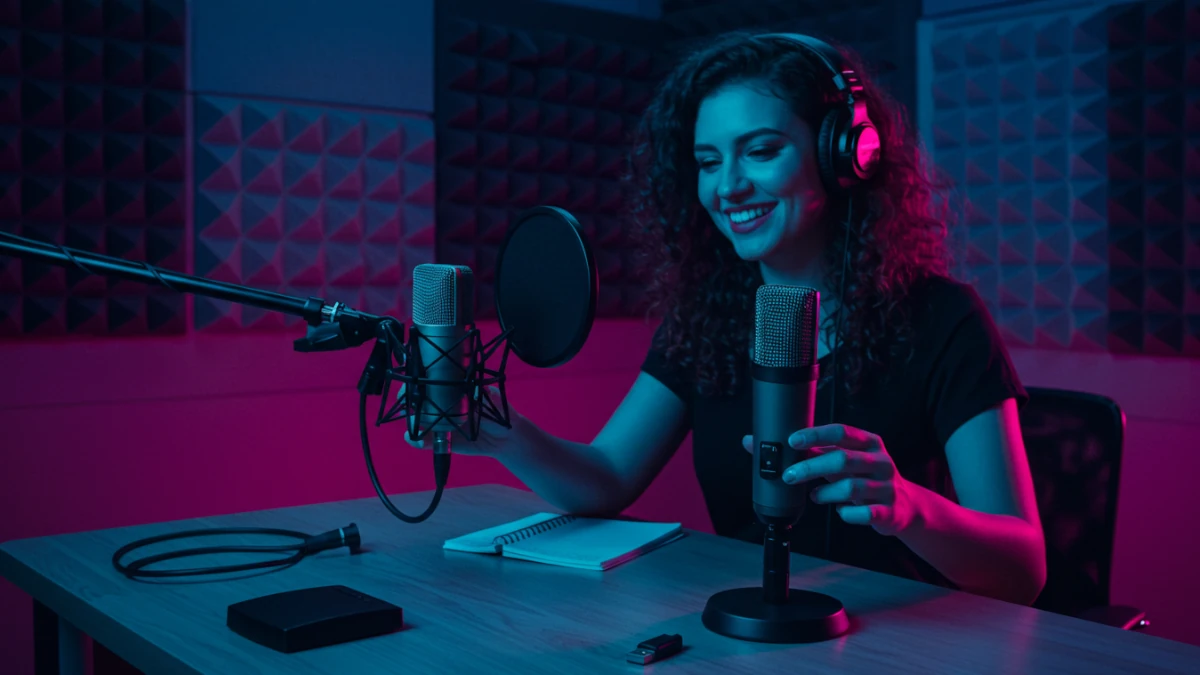HSS Podcast - Cables or Convenience? XLR vs USB Mics in the Sound Quality Showdown
HSS Staff
Hey, audio aficionados and aspiring audio producers! Whether you’re a seasoned musician or just stepping into the vibrant world of audio recording, choosing the right microphone can feel like navigating a maze of choices. The epic standoff—XLR vs. USB microphones—might have caught your eye, leaving you scratching your head. Are XLR microphones really better than their USB counterparts, or is it all just buzz? This question is like a riddle wrapped in sound waves, waiting to be unraveled. Let’s dive headfirst into the fascinating microphone jungle, explore the tech wizardry behind these devices, and help you make an informed choice that aligns perfectly with your passion. You’ll discover unexpected insights, and maybe even a plot twist or two.
So, plug in and get ready to embark on this musical journey that promises clarity and a little bit of fun! Let’s find the mic that resonates with you.
1. Sound Quality and Performance
When diving into the world of microphones, one question often pops up: are XLR microphones better than USB? To address this, we need to consider sound quality and performance as a significant factor.

Sound Quality is arguably the most critical aspect. XLR microphones are renowned for superior sound quality primarily due to their analog nature and ability to capture a broader dynamic range. They typically have better components, such as higher-quality diaphragms and preamps, which contribute to richer, more detailed sound. For instance, professional studios often use XLR mics like the Shure SM7B or the Neumann U87 to capture vocals and instruments with precision and depth. These mics excel in isolating the sound source, reducing background noise, and delivering a clean, professional-grade audio output.
On the other hand, USB microphones are often designed for convenience and ease of use. While some like the Blue Yeti offer commendable sound quality for podcasts or streaming, they generally fall short when compared to their XLR counterparts in professional audio settings. USB mics integrate an analog-to-digital converter, which can limit their ability to handle high sound pressure levels and may introduce latency issues.
Practical Tip: If you’re recording in a professional or semi-professional environment, investing in an XLR microphone setup is advisable. However, if you’re a beginner or need a quick plug-and-play solution for digital content creation, a USB mic might be more practical.
In essence, if sound quality and performance are your top priorities, and you’re willing to invest in additional equipment like an audio interface, XLR microphones are typically the better choice.
2. Ease of Use and Convenience: Are XLR Microphones Better Than USB?
When it comes to ease of use and convenience, USB microphones often have the upper hand over their XLR counterparts. This factor plays a crucial role for beginners and those who prioritize a plug-and-play experience. USB microphones are designed for simplicity, allowing users to connect directly to a computer or laptop without needing additional equipment. For instance, a podcast enthusiast can start recording immediately after plugging in their USB microphone, making it an ideal choice for quick setup and minimal hassle.
On the other hand, XLR microphones require more components to operate. To get started, you’ll need an audio interface or mixer, which can be both a learning curve and an additional expense. However, this setup offers greater control over audio quality and flexibility in sound manipulation. For example, a musician might prefer an XLR microphone as it allows for multiple inputs, making it easier to record various instruments simultaneously.

Practical tips for those considering an XLR setup include investing in a quality audio interface, such as the Focusrite Scarlett series, and ensuring you have the appropriate cables and phantom power if your microphone requires it. While the initial setup might seem daunting, the enhanced audio quality and professional-grade features available with XLR microphones can be worth the effort for those serious about their sound.
Ultimately, the choice between USB and XLR microphones in terms of ease of use and convenience will depend on your specific needs and technical comfort level. Beginners or those seeking simplicity might lean towards USB microphones, while more experienced users or those requiring advanced capabilities might opt for XLR systems.
3. Versatility and Expandability: Are XLR Microphones Better Than USB?
When delving into the debate over whether XLR microphones are better than USB, the concepts of versatility and expandability play a pivotal role. XLR microphones often emerge as the winners when your focus is on building a versatile and expandable audio setup.
Versatility is a significant advantage of XLR microphones. These mics can connect to various kinds of equipment, such as audio interfaces, mixers, and portable recorders. This makes them suitable for a wide range of applications, from studio recordings and live performances to podcasting and field recordings. For instance, if you’re recording a podcast in a studio today but planning to record a live band tomorrow, an XLR microphone will easily adapt to both scenarios with the right equipment.
On the other hand, USB microphones usually connect directly to a computer, which limits their use to situations where a computer is available. While this setup is convenient for beginners or those with simple needs, it lacks the flexibility required for more complex audio environments.
Expandability is another area where XLR microphones shine. As your audio production needs grow, incorporating additional equipment, such as preamps or compressors, becomes seamless with XLR connections. For example, adding a high-quality preamp can significantly enhance the sound quality of your recordings, an upgrade not typically possible with USB mics. This expandability ensures your audio setup can evolve over time, allowing you to explore new creative possibilities without being constrained by technology.
In conclusion, if your goal is to create a robust and adaptable audio setup, XLR microphones provide the versatility and expandability needed to support your growth and experimentation in the world of audio production.
4. Price and Budget Considerations
When diving into the world of microphones, one crucial factor that often influences the decision is the budget. The question, “Are XLR microphones better than USB?” doesn’t only hinge on performance and quality; it also involves costs and what you’re willing to invest in your audio setup.
Understanding Cost Differences
XLR microphones typically come with a higher price tag compared to USB microphones. This is primarily due to their professional-grade build and the need for additional equipment like audio interfaces or mixers. For instance, a decent XLR microphone could start around $100 to $150, but the cost doesn’t stop there. You’ll need an audio interface, which can range from $50 to several hundred dollars, depending on its features and quality. Then, cables and stands add to the cost. In contrast, USB microphones are more budget-friendly, often starting as low as $50 and not requiring any extra gear other than a computer.
Evaluating Long-term Value
While the initial investment in an XLR setup might seem steep, it’s essential to consider the long-term benefits. XLR systems offer greater flexibility and often have superior sound quality, making them worthwhile for those serious about audio production. For example, if you’re planning on recording music or doing professional voice work, the enhanced audio clarity and control offered by XLR setups can justify the higher cost.
Practical Tips for Budgeting
To make the most out of your budget, assess your current and future needs. If you’re a beginner podcaster or content creator, starting with a USB microphone might be more economical. However, if you anticipate scaling up or going pro, investing in an XLR might save money in the long run. Look for bundle deals that include necessary accessories, and don’t be afraid to explore second-hand options for quality gear at reduced prices.
Ultimately, understanding your budget constraints and audio requirements will guide you in deciding whether an XLR microphone is a better investment than a USB microphone, or if a USB mic meets your needs perfectly. Remember, the best microphone is the one that aligns with both your aspirations and your wallet.
5. Suitability for Different Applications: Are XLR Microphones Better Than USB?
When deciding between XLR and USB microphones, suitability for different applications becomes a crucial factor. Each type has its strengths and weaknesses depending on what you’re aiming to achieve.
Professional Recording Studios
XLR microphones reign supreme in professional studio settings. Their ability to connect with high-end audio interfaces and mixers makes them ideal for capturing high-fidelity sound. For instance, if you’re recording a full band or a complex vocal arrangement, the flexibility and superior sound quality of XLR mics, like the Shure SM7B, offer unparalleled advantages. They allow for precise sound control, multiple mic setups, and advanced sound manipulation, which are essential for high-quality studio recordings.
Home Studios and Podcasters

USB microphones, such as the Blue Yeti, shine in home studios and for podcasters who prioritize simplicity and convenience. They are perfect for content creators who need a plug-and-play solution without the hassle of additional gear. If you’re recording solo podcasts, voiceovers, or streaming, a USB mic can offer excellent sound quality with minimal setup. For example, a YouTuber reviewing tech gadgets would find the ease of use and quick setup of a USB microphone to be immensely beneficial.
Live Performances
In live performance scenarios, XLR microphones are the go-to choice. Their robust build and ability to handle dynamic noise environments make them suitable for concerts and live events. An example would be using an XLR mic for a live band performance, where durability and sound clarity are paramount.
Identifying your specific needs will guide you toward the right choice. Consider the environment, the level of sound quality required, and your ease of use preference to make an informed decision.
Conclusion: Are XLR Microphones Better Than USB?
In conclusion, the choice between XLR and USB microphones essentially boils down to your unique needs and circumstances as an audio enthusiast, content creator, or musician. Throughout this exploration, we’ve dissected the distinct qualities and advantages of each type of microphone to provide you with a clear understanding.
XLR microphones have long been the preferred choice for professionals owing to their superior sound quality and versatility. These microphones give you full control over your recording setup, allowing for seamless integration with high-end audio interfaces and mixers. This flexibility comes in handy when you require precise sound manipulation or plan on scaling your audio production setup in the future. Additionally, XLR microphones typically offer better durability and low noise floor, making them suitable for professional studio environments.
On the other hand, USB microphones stand out due to their plug-and-play simplicity and affordability, making them an excellent choice for beginners and those with straightforward recording needs. These microphones provide decent audio quality without the need for additional equipment, which is highly appealing for podcasters, streamers, and musicians creating on-the-go. If convenience and a budget-friendly option with solid performance are what you’re after, USB microphones have got you covered.
Ultimately, your decision should align with your goals, technical preferences, and budget constraints. Whether you’re aiming for broadcast-quality productions or need a quick setup for personal projects, both XLR and USB microphones have their rightful place in the audio world.
Ready to elevate your audio game? Consider conducting a personal trial by investing in both types of microphones for different scenarios. Experiment with XLR and USB models to discover which aligns best with your creative process and artistic aspirations. Share your experiences and let us know which microphone worked wonders for you. Your feedback could guide fellow creators on their audio journey.
So, dive in, explore, and transform your audio recordings from average to extraordinary today!

